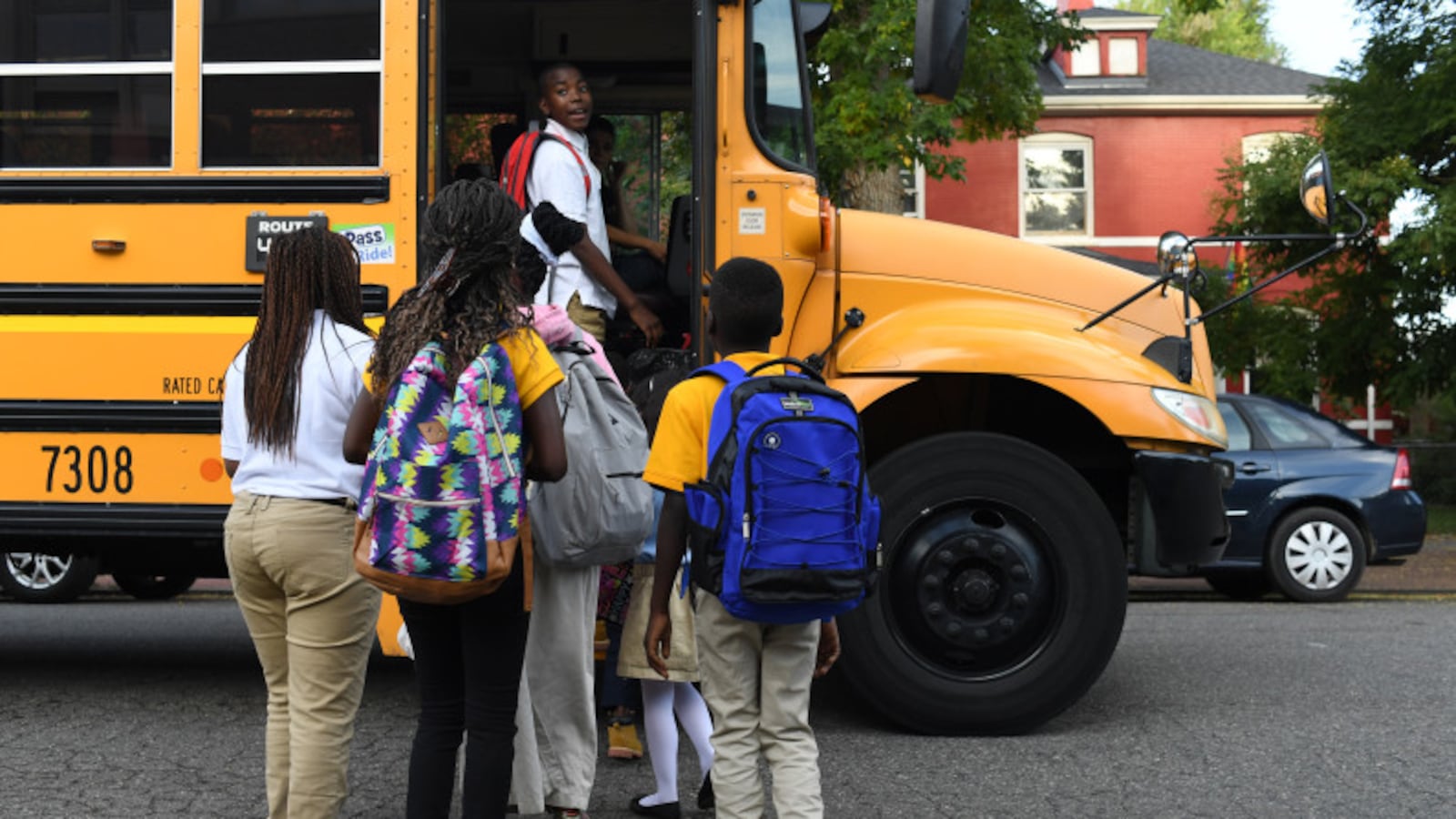Advocates for Detroit schools have long lamented the daily exodus of students from the city — the nearly 30,000 Detroit children who hop on buses or get in cars every morning to attend schools outside of Detroit.
Now, a new study sheds light on who these students are and why they might be leaving.
Knowing the answer is important for Detroit, said Wayne State University education professor Sarah Winchell Lenhoff who, with her colleague Ben Pogodzinski, released a study Monday that looked at several major challenges facing Detroit schools.
When students leave the city for school, whether they’re attending suburban charter schools or traditional school districts in the suburbs, they take their state funding with them. That’s nearly $8,000 per student.
“That $8,000 follows them to Oak Park,” Lenhoff said. “It doesn’t stay in the city to support the success and quality of the schools here. That leads to the further deterioration of our schools and to more kids leaving.”
One of the study’s findings was that a major reason students leave is because they live in neighborhoods that have already seen their schools deteriorate and close.
The study, which looked at all students enrolled in schools in Detroit and the three counties in its metro area between 2010-11 and 2017-18 school years, found that students who lived in neighborhoods with higher concentrations of schools near their homes were less likely to leave the city to get an education than those who lived in neighborhoods with fewer schools.
The authors used the example of Brightmoor, where many schools have closed in recent years. There, where the number of students exceeds the number of available school seats, roughly 1 in 5 Brightmoor students leaves the city every day for school. Students who lived in Brush Park, near downtown Detroit, where there are far more nearby schools than school-aged children, had a much lower rate of departures.
Among other findings:
- The decision to leave the city for school isn’t always permanent. In fact, it’s more of a circle than a line. More than half of students who traveled outside Detroit in the 2017-18 school year had attended a school in the city the previous year. About a third of city students had previously attended school elsewhere.
- Some racial groups are more likely to leave the city than others. Notably, Asian students and white students, including Arab Americans, were more likely to leave the city than African-American students. Many Asian and Arab-American students live near the city’s borders with Dearborn, to the west, and Hamtramck, which is surrounded by Detroit, and go to school in those cities. Hamtramck and Dearborn have several schools that cater to Muslims and Arabic-speaking immigrants. Latinos were the group least likely to leave the city.
- Students who live in neighborhoods with higher crime rates were more likely to leave the city for school.
- Not all of the movement is out of the city. The researchers also identified more than 5,000 students who live in the suburbs and come to Detroit for school. That could include students coming in for special education or to attend elite schools like Cass Technical High School, but Lenhoff said that number needs further analysis that will be the subject of future research.
The issue of students leaving the city for school has been a focus of city leaders in recent years.
Detroit Superintendent Nikolai Vitti has talked of trying to lure those students back to the city with new programs and schools, while Mayor Mike Duggan has tried to attract them with a new bus route and after school program in a neighborhood near the city’s northern border. The pair often cite the 30,000 figure, though Lenhoff and Pogodzinski put the number of student who leave the city slightly lower, at nearly 26,000.
In their study, which is called “Student Exit, Mobility and Attendance in Detroit,” Lenoff and Pogodzinski also looked at other issues facing the city schools. Among them: The nation’s highest rates of chronic absenteeism, and the intractable problems caused by students frequently changing schools.
The frequent school changes — often called student mobility by researchers — was the subject of a major report by Chalkbeat and Bridge Magazine last year that relied on research from Lenhoff and Pogodzinski. That story cited numbers from the professors showing that 1 in 4 Detroit students changes schools every year.
The study the pair released Monday has a lower student mobility rate of 17 percent because this more recent study focused just on students who change schools between school years, excluding students who changed schools during the school year. Lenhoff said the pair are planning another study that will examine midyear transfers soon.
The study is part of a project funded by the Wayne State College of Education and the Skillman Foundation (which also funds Chalkbeat).
“It’s meant to be a collaborative effort to produce rigorous academic research that’s relevant to policymakers in Detroit,” Lenhoff said. “It’s meant to help build a foundation for ongoing collaboration where policymakers and educators can start driving the research agenda instead of it coming from the outside.”
The researchers are asking the public to complete an online survey that could fuel the next research phase.
Read the full report here:

